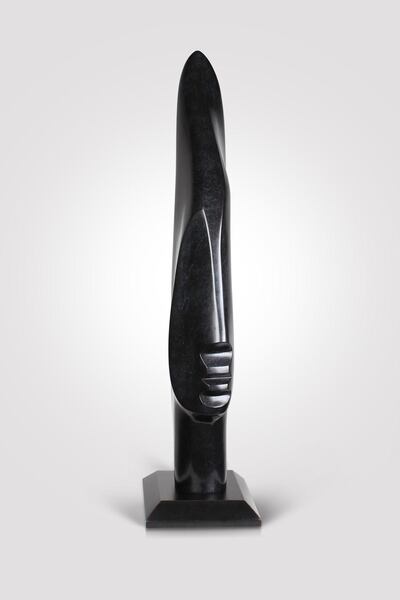"He would always say: 'I look to the world and I am moved by what gives me a sense of humanness. I am a person who is born every day, again and again,'" recalls Fadi Basbous, the son of Lebanon's master sculptor, Alfred Basbous. But humanness in art has not always been the regional status quo.
Alfred's solo debut exhibition in 1958, when he was 33, positioned him at the forefront of the cultural renaissance. The 1960s was a time of inventiveness. There was jolt and electricity in the Lebanese art scene. Modernism was gaining momentum. Artists sidestepped the bourgeoisie and sought meritocratic communities.
Sursock Museum, bequeathed by a local aristocrat after his passing, opened its doors for the first time in 1961. Scores of galleries set up shop. The country's first art academy, Academie Libanaise des Beaux-Arts, was entering its third decade. Private patronage and the artists' own initiative were the drivers of change. The surge was fierce and Alfred Basbous was a leading powerhouse.
"The modernist artist believes that honesty towards life and nature make for the best art. He thinks that the role of the artist is a pioneering one. He is idealistic; he preaches, showing the right way with confidence because he has a clear vision of his values. The art is the reflection of the thought, an image of the reality, and a tangible translation of the values, therefore it imposes the thought on the material. He eventually hoped the stone would sense its own spirit," says Fadi.
Sixty years later, Alfred's work is on view in London at Bel-Air Fine Art, which runs until Monday. Alfred Basbous: Body and Mind covers his preparatory drawings and sculpture, and in true dualistic spirit as the title implies, bridges the interconnectedness of human form and shape-consciousness. Deriving his subjects from imagination and tapping into his own shape-consciousness for preparatory sketches, and later to-be-sculptures, Fadi insists "his [father's] artworks reveal their secrets to the observers without confusing them in their attempts to interpret it. He depicts the consciousness through his own consciousness; therefore, the observer does not have to solve its mysteries."
In the show you have the slinky, soft-spined bronzes that command the space with fluid elegance, or the ferociously tactile and twisted torsos that echo Venus. There are the contorted acrobats that negotiate between voids and are intensely alive in these tensions. The sculpture of the three brothers is robust, worked to a harsher texture and with silhouettes that are more squared, more masculine. Of particular impact is The Phoenician Head, elongated with curious asymmetrical profiles and loaded with an archaic dignity that nods to both modernity and antiquity.
In the absence of frills and detail, his work is “rich in modulation, because he always tried to avoid the decoration, the cute and the stylish and strive towards combining the aesthetic harmony with conflict and struggle in the same piece. He presented his artworks to us as impressed by reality but not a depiction of it.”
Shape, in all its rotundity, its curve and its fluidity liberated the human form. According to Basbous, it was his true condition. “He sculpted slender shapes with no sharp angles. Even in his cubic and rectangular structures, joints are always rounded. Sensitive and demanding, he polished the surfaces in the extreme, making them soft and sensual, when he allowed the stone to remain rough; the relief was more welcoming than disturbing. The curves come into dialogue with each other, flirt, intersect, defy or protect themselves. Without suffering from any symmetry, the works of Alfred Basbous can nevertheless breathe a balance.”
But it was through his visit to Britain and his meetings with Henry Moore that he was exposed to the sheer scale and gravity of public sculpture. Determined the same ethos be adopted in Lebanon, Alfred, along with his brothers, Michel and Youssef, founded an open-air museum in their hometown, Rachana, transforming their native landscape into a spectacle of sculpture. Between 1994 and 2004, they hosted the annual International Symposium of Sculpture, to which over 70 renowned international sculptors were invited to cast works that would later be permanently installed onto the museum grounds.
What Basbous did is still being felt. Trips to the sculpture park are a component of school curriculums. Seminars and workshops are held there. There is a year-round exhibition. The site is now Unesco listed and dubbed the Global Village of Outdoor Sculpture. Rachana, a once-mute town, has now landmarked itself on maps and become synonymous with high art and beauty. His legacy is "sculpted in the minds of the Lebanese", says Fadi.
Alfred Basbous: Body and Mind is on show at Bel-Air Fine Art until Monday



